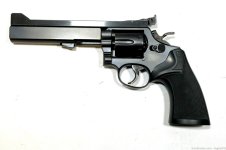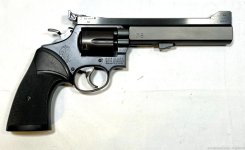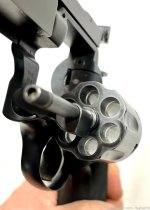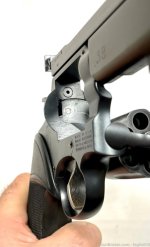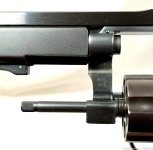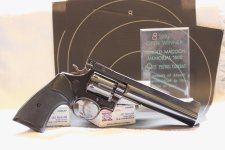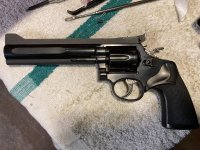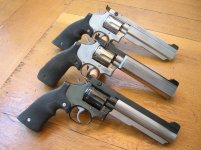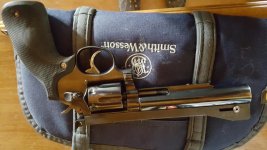A couple more comments that might add some clarification regarding the initial OP post.
The add-on anchorage for the extractor rod on OP's revolver was typical of early PPC builds. My two PPC builds, on Ruger Six series frames, were done by Greg Roberts, then of Santa Cruz, CA, starting in 1977. He used the same extractor rod anchorage system. Not too long after, Bill Davis developed and marketed his add-on underlugs which were set up for ball/detent latches. Greg retrofitted both of my revolvers using these Davis underlugs.
I am not completely certain, but I think early on in the transition from stock to customized PPC revolvers, most shooters still shot SA at the fifty yard line. As time passed and the greater stability of the muzzle heavy bull barrels was recognized, competitors started turning to shooting the entire course DA. I decided to do this too. It took me 3000 rounds of intense practice to make that conversion, but after that there was no turning back. If this recollection is accurate, that would explain why grooved wide triggers were being used on early PPC revolvers, which I think this one is. Somewhere along the line I switched from grooved to smooth triggers, because in DA the trigger finger has to slide on the trigger.
On hammer springs and light hits. Jim Clark, legendary gunsmith from Louisiana, liked to work on and use Ruger firearms. Since the Rugers used coil hammer springs, he designed an adjustable mainspring unit. He machined a threaded cylindrical strut with a nut at one end. By turning the nut one could adjust the strength of the mainspring to as light (or heavy) as the shooter desired. But one could go too far. I lost ten points in a match from a failure to fire on an otherwise outstanding target. Back home I tried that round again, and again no fire. I tightened the adjusting nut 1/2 turn, buttoned the revolver back up and fired again. This time it fired. Valuable lesson learned the hard way about thoroughly testing rounds to be used.
I think the BoMar sight ribs were probably some of the earliest ribs available for PPC builds. Early on Ron Power would only use these, because of their quality. Later on ribs came out allowing instant front sight height adjustment from seven yards out to fifty yards using a neck hold. Much quicker and easier than carrying a screwdriver out on the line, which I did.
The BoMar rib, wide grooved trigger, and method of extractor rod anchorage all lead me to believe this to be a fairly early era PPC revolver.
That still does not give a clue as to who might have built it though. I hope OP will take it out, use a steady rest, and give us an idea of how it groups at fifty yards. It certainly does appear to have the potential.

